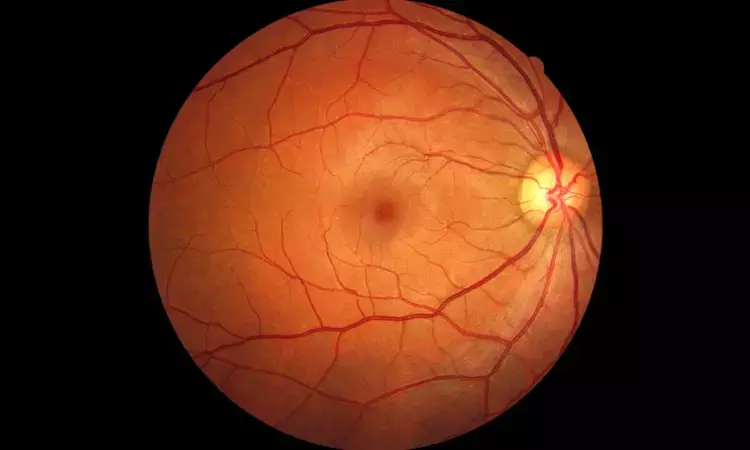- Home
- Medical news & Guidelines
- Anesthesiology
- Cardiology and CTVS
- Critical Care
- Dentistry
- Dermatology
- Diabetes and Endocrinology
- ENT
- Gastroenterology
- Medicine
- Nephrology
- Neurology
- Obstretics-Gynaecology
- Oncology
- Ophthalmology
- Orthopaedics
- Pediatrics-Neonatology
- Psychiatry
- Pulmonology
- Radiology
- Surgery
- Urology
- Laboratory Medicine
- Diet
- Nursing
- Paramedical
- Physiotherapy
- Health news
- Fact Check
- Bone Health Fact Check
- Brain Health Fact Check
- Cancer Related Fact Check
- Child Care Fact Check
- Dental and oral health fact check
- Diabetes and metabolic health fact check
- Diet and Nutrition Fact Check
- Eye and ENT Care Fact Check
- Fitness fact check
- Gut health fact check
- Heart health fact check
- Kidney health fact check
- Medical education fact check
- Men's health fact check
- Respiratory fact check
- Skin and hair care fact check
- Vaccine and Immunization fact check
- Women's health fact check
- AYUSH
- State News
- Andaman and Nicobar Islands
- Andhra Pradesh
- Arunachal Pradesh
- Assam
- Bihar
- Chandigarh
- Chattisgarh
- Dadra and Nagar Haveli
- Daman and Diu
- Delhi
- Goa
- Gujarat
- Haryana
- Himachal Pradesh
- Jammu & Kashmir
- Jharkhand
- Karnataka
- Kerala
- Ladakh
- Lakshadweep
- Madhya Pradesh
- Maharashtra
- Manipur
- Meghalaya
- Mizoram
- Nagaland
- Odisha
- Puducherry
- Punjab
- Rajasthan
- Sikkim
- Tamil Nadu
- Telangana
- Tripura
- Uttar Pradesh
- Uttrakhand
- West Bengal
- Medical Education
- Industry
Hyperbaric oxygen treatment may enhance vision in non-arteritic central retinal artery occlusions

Israel: According to research done by Assaf Rozenberg and colleagues, using hyperbaric oxygen treatment (HBOT) as part of the standard of care (SOC) for central retinal artery occlusion (CRAO) enhances the ultimate visual result.
Hyperbaric oxygen treatment (HBOT) is safe and, if accessible, can be adopted as part of SOC at all tertiary medical centers. The intake of 100 percent oxygen at pressures of more than one atmosphere absolute (ATA) is used in hyperbaric oxygen treatment (HBOT) to increase the quantity of oxygen dissolved in human tissues.
The goal of this study was to evaluate the visual outcomes of patients treated for non-arthritic central retinal artery occlusion (CRAO) in a medical center that employs hyperbaric oxygen treatment (HBOT) as part of the standard of care (SOC) to those treated in a medical center that does not. The findings of this work were published in the Journal Eye of Nature on 17th June 2021.
Data from two tertiary medical centers were used in the study. The medical records of all patients diagnosed with non-arthritic CRAO without a patent cilioretinal artery in two tertiary medical institutions between January 2010 and December 2018 were reviewed. According to a qualified neurologist's judgment, all patients received a neurological examination that included neuroimaging. All patients at both medical centers received SOC therapy, which comprised ocular massage, anterior chamber paracentesis, oral aspirin, oral acetazolamide, or topical beta-blocker, as determined by a trained ophthalmologist.
This study found a substantial improvement in VA in CRAO patients treated with HBOT. A mean VA improvement of 0.15 logMAR between presentation and last follow-up visit was not determined to be statistically significant in the control group (who did not get HBOT). After adjusting for age, gender, and duration of symptoms, the final BCVA of the HBOT group was substantially higher than that of the control group. There was no link found between the time of the initial hyperbaric oxygen therapy or the existence of a cherry-red patch and the ultimate visual result.
In conclusion, it appears that HBOT for non-arteritic CRAO outperforms standard therapy in terms of visual results. Given that the proportion of patients obtaining functional eyesight was identical to the control group, additional study is needed to validate the clinical and quality of life consequences of such improvement, as well as the cost-effectiveness of this treatment.
Reference:
Rozenberg, A., Hadad, A., Peled, A. et al. Hyperbaric oxygen treatment for non-arteritic central retinal artery occlusion retrospective comparative analysis from two tertiary medical centres. Eye (2021). https://doi.org/10.1038/s41433-021-01617-8
Medical Dialogues consists of a team of passionate medical/scientific writers, led by doctors and healthcare researchers. Our team efforts to bring you updated and timely news about the important happenings of the medical and healthcare sector. Our editorial team can be reached at editorial@medicaldialogues.in.
Dr Kamal Kant Kohli-MBBS, DTCD- a chest specialist with more than 30 years of practice and a flair for writing clinical articles, Dr Kamal Kant Kohli joined Medical Dialogues as a Chief Editor of Medical News. Besides writing articles, as an editor, he proofreads and verifies all the medical content published on Medical Dialogues including those coming from journals, studies,medical conferences,guidelines etc. Email: drkohli@medicaldialogues.in. Contact no. 011-43720751


